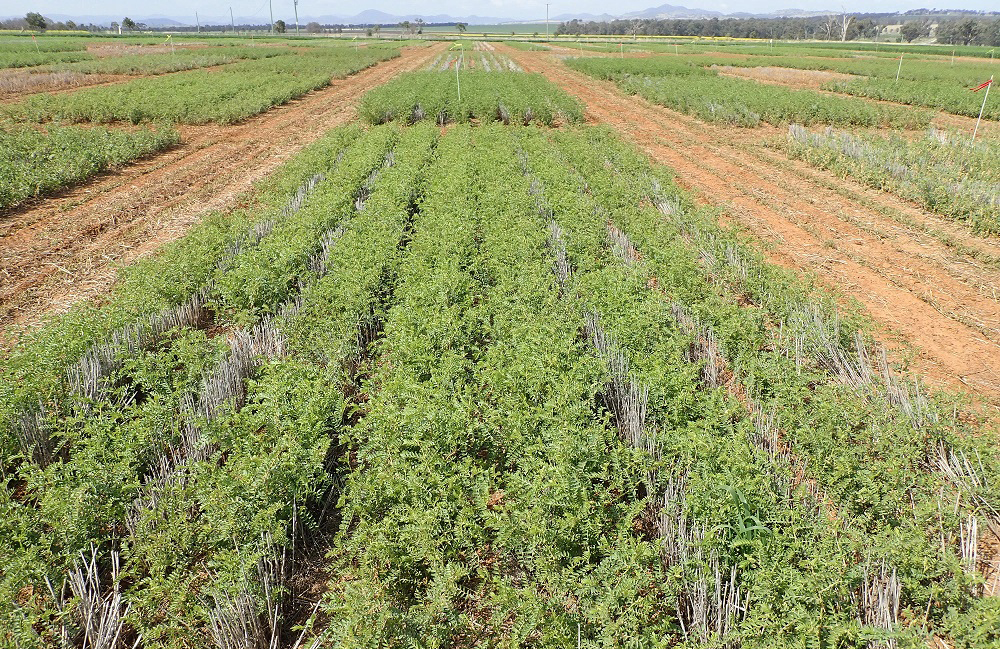Pulse legumes – in particular chickpeas – are in demand as exports and, closer to home, as ingredients for value-added ‘healthy’ products such as hummus and bhuja snacks. They’re also a terrific rotational crop, fixing nitrogen in soil.
But with post-drought Ascochyta blight a concern across Australia’s northern growing regions, planting chickpeas varieties with resistance to this damaging disease could make a big difference to farmers’ bottom lines.
Fortunately, the latest findings from NSW Department of Primary Industries’ Tamworth Agriculture Institute, which has been running ongoing blight resistance trials, has practical advice for those deciding on what varies to plant next season.
NSW DPI Plant Pathologist Kevin Moore says the ongoing crop trials include chickpea varieties currently grown throughout the northern growing region “from Dubbo through to Central Queensland”. The goal of the research is “to develop blight management packages for chickpea varieties that match a variety’s resistance to Ascochyta”, he says.
“A chickpea variety rated Very Susceptible to Ascochyta, for example Kyabra, will require more intensive management, closer monitoring and more fungicide applications, than a variety with greater resistance, such as PBA Seamer,” Dr Moore explains.
DPI advises northern-region chickpea growers to plant with both region and resistance in mind.
Source: Good results in chickpea disease management trials I NSW DPI

